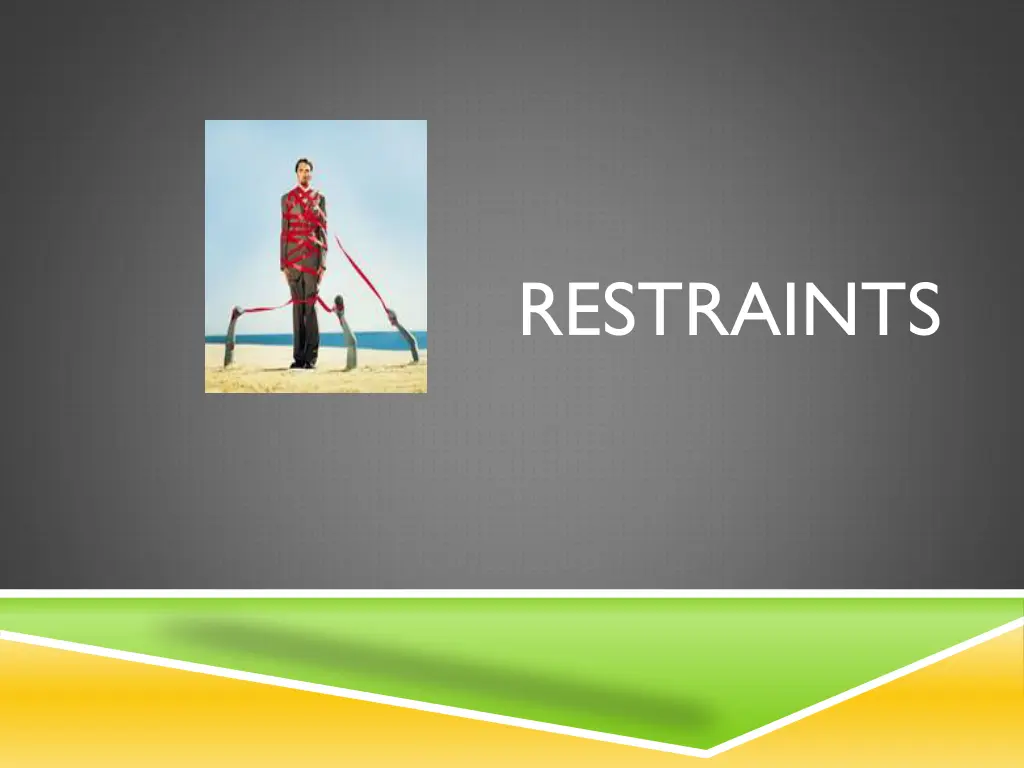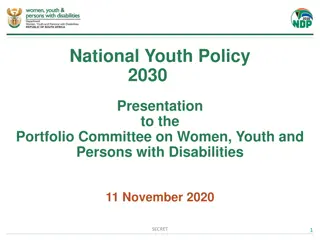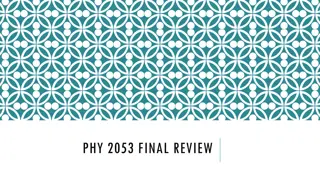
Understanding Restraints in Patient Care
Learn about the use of restraints in patient care including who can be restrained, why restraints are used, when to restrain a patient, types of restraints, and how to assist a restrained patient in distress. Understand the ordering requirements for restraints or seclusion in healthcare settings.
Download Presentation

Please find below an Image/Link to download the presentation.
The content on the website is provided AS IS for your information and personal use only. It may not be sold, licensed, or shared on other websites without obtaining consent from the author. If you encounter any issues during the download, it is possible that the publisher has removed the file from their server.
You are allowed to download the files provided on this website for personal or commercial use, subject to the condition that they are used lawfully. All files are the property of their respective owners.
The content on the website is provided AS IS for your information and personal use only. It may not be sold, licensed, or shared on other websites without obtaining consent from the author.
E N D
Presentation Transcript
THE WHO, WHY, WHEN, WHAT AND HOW OF RESTRAINTS
RESTRAINTS Who Can be Restrained? Why would we need to restrain a patient? Patients that may be at risk for harming themselves. To ensure the physical safety of the patient, a staff member, or others. For example, patients may be pulling at or compromising important tubes, lines, and other treatments. To promote healing and prevent harm.
RESTRAINTS When should a patient be restrained? What kind of restraints do we normally use? Restraints are always the Last option! Soft fabric wrist restraints Soft fabric vest restraints Patients can only be restrained when as order from a doctor is obtained The patient is reassessed often, so that we can discontinue the restraints as soon as possible, as this is our goal.
RESTRAINTS How can you help a patient that is restrained and may be in distress? If you enter a patient room, and you notice the patient "does not look right , and the restraint may have the potential to harm the patient (Change in skin color, temperature, sensation, appearance) 1. Immediately release the restraint 2. Call for help 3. Try to calm the patient if possible
ORDERING REQUIREMENTS FOR RESTRAINTS OR SECLUSION This policy requires that a physician or other licensed independent practitioner (LIP) responsible for the care of the patient order restraint or seclusion prior to the application of restraint or seclusion. In an emergency situation the order must be obtained either during the emergency application of the restrain or seclusion or immediately within a few minutes afterwards. If restraint or seclusion is discontinued prior to the expiration of the original order, a new order must be obtained prior to reinitiating the use of restraint or seclusion
CONTINUED Orders obtained in accordance with this policy to address a patient s medical care-related needs (safety) that are evidenced by non-violent or non-destructive behavior (non-behavioral restraint) are considered in full force and effect for up to three calendar days which includes the day the order was obtained. If the patient remains in restraint for more than three consecutive calendar days, then a new order must be obtained.
REQUIREMENTS FOR ORDERING RESTRAINS AND DOCUMENTATION SEE POLICY-MCH-2053






















